Kirby Larson's Blog, page 26
November 5, 2013
From the Office of the Future of Reading
I gladly welcome today's guest blogger, Ramona Behnke, a teacher for for 17 years who has been teaching 6th grade language arts/social studies at Islander Middle School for the past nine years. Ramona is passionate about passing on her love of books to the students she teaches. You can follow Ramona on Twitter or her blog.
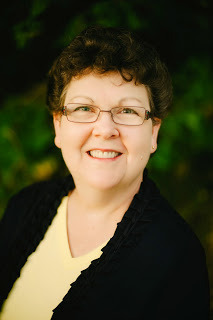
It’s November and time for Mock Newbery book clubs in room 104! My classroom partners with the King County Library System (KCLS) for You Choose the Next Newbery @KCLS. The funds for our books are provided by a grant from our schools foundation. When we finish our cycle of book clubs, the books are available for the use of other teachers in our building.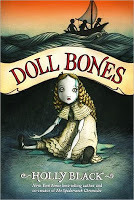

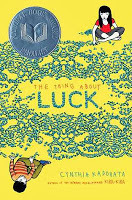
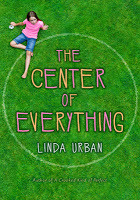
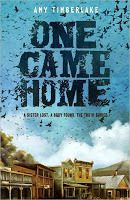
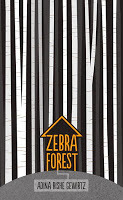
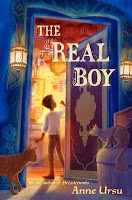
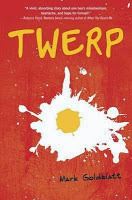
I introduce the titles to my students and give them a few days to explore the books. Each student selects a two or three week book completion cycle (based on his or her reading rate during September and October) and then ranks the titles in order of preference. I’m honest with them that dividing the books between two classes and fifty-two students is a challenging process, but I assure them that they will get to read their first or second choice title at some point during the ten week book club cycle.
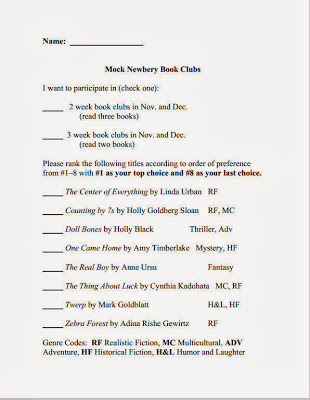
My students use a bookmark to capture their thinking while reading the books. I encourage them to keep an ample supply of sticky notes to mark places they will want to revisit later and record on the bookmark. The bookmark nudges students to pay attention to golden lines, new vocabulary, author’s style, and to sketch, ask questions, and make connections that will help them prepare for book discussions.
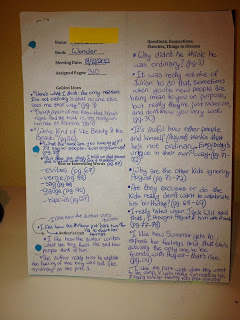 Parents, friends, paraprofessionals, librarians (school and KCLS), retired teachers, administrators, other teachers, school secretaries, and even members of my own family lead our book groups. I rotate among groups, listen to discussions, and take photos. At the conclusion of each book club, students complete a book club reflections form.
Parents, friends, paraprofessionals, librarians (school and KCLS), retired teachers, administrators, other teachers, school secretaries, and even members of my own family lead our book groups. I rotate among groups, listen to discussions, and take photos. At the conclusion of each book club, students complete a book club reflections form.
On completing the book club cycle, each student votes for his or her favorite book. This step allows students to honor their personal favorite, and then set that aside as we continue a deeper analysis of the books using the Newbery criteria. Students set up an evaluation grid in their WRN (Writer’s Reader’s Notebook) for each book read. As we focus on one criterion at a time, students rate each book for that specific criterion and give a brief explanation of the rating. Once all criteria are completed, each student decides which title should win the Newbery Award and completes a written assignment defending this choice using the Newbery criteria as the lens to judge the book.
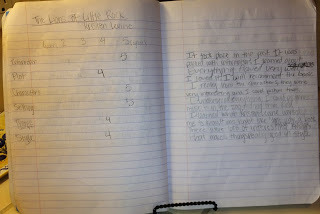
I incorporate a fishbowl discussion for each title based on the process used by KCLS librarians (see Feb. 25, 2013 blog post). We cast our online vote with KCLS and enjoy watching the live feed as the Newbery Award is announced at the ALA Mid-Winter Convention.
My passion for continuing Mock Newbery book clubs is fueled by student feedback: “I had fun reading the books, then voting, and then watching the actual awards.”“The best part of book clubs was hearing other people’s ideas and perspectives of the book and sharing. I really support Mock Newbery book clubs since they’re a great way to reflect on what you read.”
This past week a 7th grader stopped me in the hall with the query, “Have you started Mock Newbery book clubs yet? Can I get a copy of the list so I can read them too?”
Thank you Ramona for sharing such a creative way of engaging your students in the world of books.

It’s November and time for Mock Newbery book clubs in room 104! My classroom partners with the King County Library System (KCLS) for You Choose the Next Newbery @KCLS. The funds for our books are provided by a grant from our schools foundation. When we finish our cycle of book clubs, the books are available for the use of other teachers in our building.








I introduce the titles to my students and give them a few days to explore the books. Each student selects a two or three week book completion cycle (based on his or her reading rate during September and October) and then ranks the titles in order of preference. I’m honest with them that dividing the books between two classes and fifty-two students is a challenging process, but I assure them that they will get to read their first or second choice title at some point during the ten week book club cycle.

My students use a bookmark to capture their thinking while reading the books. I encourage them to keep an ample supply of sticky notes to mark places they will want to revisit later and record on the bookmark. The bookmark nudges students to pay attention to golden lines, new vocabulary, author’s style, and to sketch, ask questions, and make connections that will help them prepare for book discussions.
 Parents, friends, paraprofessionals, librarians (school and KCLS), retired teachers, administrators, other teachers, school secretaries, and even members of my own family lead our book groups. I rotate among groups, listen to discussions, and take photos. At the conclusion of each book club, students complete a book club reflections form.
Parents, friends, paraprofessionals, librarians (school and KCLS), retired teachers, administrators, other teachers, school secretaries, and even members of my own family lead our book groups. I rotate among groups, listen to discussions, and take photos. At the conclusion of each book club, students complete a book club reflections form. On completing the book club cycle, each student votes for his or her favorite book. This step allows students to honor their personal favorite, and then set that aside as we continue a deeper analysis of the books using the Newbery criteria. Students set up an evaluation grid in their WRN (Writer’s Reader’s Notebook) for each book read. As we focus on one criterion at a time, students rate each book for that specific criterion and give a brief explanation of the rating. Once all criteria are completed, each student decides which title should win the Newbery Award and completes a written assignment defending this choice using the Newbery criteria as the lens to judge the book.

I incorporate a fishbowl discussion for each title based on the process used by KCLS librarians (see Feb. 25, 2013 blog post). We cast our online vote with KCLS and enjoy watching the live feed as the Newbery Award is announced at the ALA Mid-Winter Convention.
My passion for continuing Mock Newbery book clubs is fueled by student feedback: “I had fun reading the books, then voting, and then watching the actual awards.”“The best part of book clubs was hearing other people’s ideas and perspectives of the book and sharing. I really support Mock Newbery book clubs since they’re a great way to reflect on what you read.”
This past week a 7th grader stopped me in the hall with the query, “Have you started Mock Newbery book clubs yet? Can I get a copy of the list so I can read them too?”
Thank you Ramona for sharing such a creative way of engaging your students in the world of books.
Published on November 05, 2013 05:30
November 1, 2013
Friend Friday
Please welcome my dear, dear friend Suz Blackaby to the blog today. I first met Suz (I think!) at the wonderful Haystack writing conference at Cannon Beach, Oregon (the conference I still called Haystack long after it moved to the Reed College campus). The last book of hers featured on this blog was Nest, Nook and Cranny, illustrated by another friend of mine, Jamie Hogan. What a great world I live in --populated by such talented friends!
 Suz Blackaby
Suz Blackaby
National Novel Writing Month? OhNo.
There are a bunch of things I feel reasonably certain I’m not ever going to attempt: Everest, Julia Child’s coq au vin, skydiving, wrangling (pretty much anything to do with livestock is out), Zumba. I know my limits. And if dismal history is any indication (trust me, it is), NaNoWriMo can safely be included up near the top of the list.
No. Way.
I do, however, wholeheartedly embrace the spirit of NaNoWriMo, which is a completely different story. I’ve splurged on the brand new notebook that cost a tiny bit too much; I’ve fetched the Uggs and the old sweater out of the back of the closet; I’ve tidied up my work space, filing, sifting, shelving, recycling, and dusting as necessary; I’ve stocked up on the obvious supplies—tea, Cheezits, jumbo boxes of Mike and Ike Hot Tamales, index cards in two sizes, post-its in good colors, and a wide selection of perfect pens. The pencils are sharp. The Brandenburg concertos are cued. The space heater is plugged in.
If anyone is prepared to join my Muse in entertaining the merry twins, Motivation and Resolve, I am.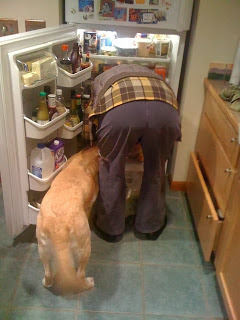 Suz and Lottie, hard at work
Suz and Lottie, hard at work
And let’s not for one single second underestimate the giddy power of the rank and file. Zingy energy proliferates as fellow writers pace through their own preliminary rituals, making mental maps of opening scenes; comparing software options; trading wisdom gleaned from Stephen King, Anne Lamott, John Gardner, Natalie Goldberg, Katherine Paterson, Donald Maass, and Harold Underdown; and scheduling morale-boosting meet-ups. Awesome.
Am I immune to such a rich abundance of good juju swirling around my team? Hardly.
Add to the irresistibility of the countdown the inherent and obvious mood enhancement of the season. Except maybe for peaches and Vitamin D, I’m not a fan of August and am never sorry to see it go. Give me chilly mornings, tule fog, edgy breezes, patchy sunshine, and lots of deciduous plants, perfect conditions for quietly hunkering down to the task. For me, fall and all its trappings herald the very essence of industry. You call it a pumpkin latte, I call it creative juices, with whip.
So yes. I totally get it. But forget it. It isn’t that NaNoWriMo is too much work. It is too much like work.
On the clock I write for the educational marketplace, which means that my professional life and my creative life overlap in untidy ways. I like to keep them separate in my brain and in my world, insofar as that is possible, which often means saving up ideas and inspiration until I can put them to good use. Tens of thousands of words a month is not necessarily unusual, workwise, cranking away; when I get the chance to sidestep the grind, I choose a more leisurely gait.
So while my friends and colleagues tackle NaNoWriMo, I’ll stick to a slower, shorter, steadier version to suit my time and my temperament:CoPo2: Compose and Polish a Couple-three Poems per weekPicSix: Those six picture books you’ve been fiddling with? Finish one.ChaChaCha!: Three Chapters!Toast: Try Outlining A Story24/7: Twenty-four prompts every seven daysKeep At It: (Book ain’t gonna write itself, just sayin)
November. It’s going to be a great month for writing.
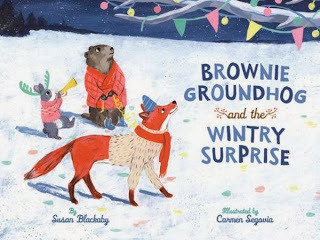
Susan Blackaby is the author of over 150 books for beginning readers. On her own time, she is an award-winning poet, and her latest picture book, Brownie Groundhog and the Wintry Surprise (Sterling Children’s Books), was released October 1.
 Suz Blackaby
Suz Blackaby
National Novel Writing Month? OhNo.
There are a bunch of things I feel reasonably certain I’m not ever going to attempt: Everest, Julia Child’s coq au vin, skydiving, wrangling (pretty much anything to do with livestock is out), Zumba. I know my limits. And if dismal history is any indication (trust me, it is), NaNoWriMo can safely be included up near the top of the list.
No. Way.
I do, however, wholeheartedly embrace the spirit of NaNoWriMo, which is a completely different story. I’ve splurged on the brand new notebook that cost a tiny bit too much; I’ve fetched the Uggs and the old sweater out of the back of the closet; I’ve tidied up my work space, filing, sifting, shelving, recycling, and dusting as necessary; I’ve stocked up on the obvious supplies—tea, Cheezits, jumbo boxes of Mike and Ike Hot Tamales, index cards in two sizes, post-its in good colors, and a wide selection of perfect pens. The pencils are sharp. The Brandenburg concertos are cued. The space heater is plugged in.
If anyone is prepared to join my Muse in entertaining the merry twins, Motivation and Resolve, I am.
 Suz and Lottie, hard at work
Suz and Lottie, hard at workAnd let’s not for one single second underestimate the giddy power of the rank and file. Zingy energy proliferates as fellow writers pace through their own preliminary rituals, making mental maps of opening scenes; comparing software options; trading wisdom gleaned from Stephen King, Anne Lamott, John Gardner, Natalie Goldberg, Katherine Paterson, Donald Maass, and Harold Underdown; and scheduling morale-boosting meet-ups. Awesome.
Am I immune to such a rich abundance of good juju swirling around my team? Hardly.
Add to the irresistibility of the countdown the inherent and obvious mood enhancement of the season. Except maybe for peaches and Vitamin D, I’m not a fan of August and am never sorry to see it go. Give me chilly mornings, tule fog, edgy breezes, patchy sunshine, and lots of deciduous plants, perfect conditions for quietly hunkering down to the task. For me, fall and all its trappings herald the very essence of industry. You call it a pumpkin latte, I call it creative juices, with whip.
So yes. I totally get it. But forget it. It isn’t that NaNoWriMo is too much work. It is too much like work.
On the clock I write for the educational marketplace, which means that my professional life and my creative life overlap in untidy ways. I like to keep them separate in my brain and in my world, insofar as that is possible, which often means saving up ideas and inspiration until I can put them to good use. Tens of thousands of words a month is not necessarily unusual, workwise, cranking away; when I get the chance to sidestep the grind, I choose a more leisurely gait.
So while my friends and colleagues tackle NaNoWriMo, I’ll stick to a slower, shorter, steadier version to suit my time and my temperament:CoPo2: Compose and Polish a Couple-three Poems per weekPicSix: Those six picture books you’ve been fiddling with? Finish one.ChaChaCha!: Three Chapters!Toast: Try Outlining A Story24/7: Twenty-four prompts every seven daysKeep At It: (Book ain’t gonna write itself, just sayin)
November. It’s going to be a great month for writing.

Susan Blackaby is the author of over 150 books for beginning readers. On her own time, she is an award-winning poet, and her latest picture book, Brownie Groundhog and the Wintry Surprise (Sterling Children’s Books), was released October 1.
Published on November 01, 2013 05:30
October 31, 2013
From the Office of the Future of Reading
Please join me in welcoming today's guest blogger, Timothy O'Neill. After graduating from Ohio State University in 2005, Tim made his journey south to Northwest Atlanta (Cobb County School District). He is in his ninth year of teaching at Hendricks Elementary School; a Title I school and 2012 Blue Ribbon winner (named by the U.S. Department of Education). He is currently working on his Ed.S. in Instructional Technology.
 Tim O'Neill
Tim O'Neill
First of all, you should know that I have the best job in the world. I am a fifth grade Special Education teacher in my ninth year of teaching at a Title I school in the Metropolitan Atlanta area. Every day, my co-teacher and I (in the inclusion setting) have the unique opportunity to act as role models to our students, to provide them a safe and stable environment they may not always have at home, to demonstrate to them that learning can be fun, and to help them realize that education can be their ticket for improving their current situations. One of the challenges our students face as readers is the occasionally overwhelming number of children’s literature from which they have to choose. Previewing books is a skill that we continue to work on throughout the year, but one strategy we have implemented to assist with this is “Blessing Books” on each Friday. My co-teacher and I will each select two books to book talk and then post the book covers on our cabinet doors so that students may refer to this area of our room when selecting their next great independent reading book (Please note that Wonder is not posted because it was our first Extended Text/Read Aloud of the year).
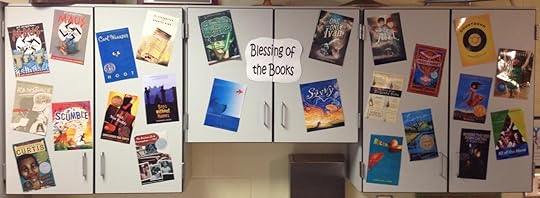 Additionally, we also post YouTube book trailers on our class Edmodo page. This creates an excitement and a buzz that often leaves a waiting list of students trying to get their hands on whatever book it might be. Reading is frequently thought of as an independent activity, but we try to give our students as many opportunities as possible to communicate about titles and authors.
Additionally, we also post YouTube book trailers on our class Edmodo page. This creates an excitement and a buzz that often leaves a waiting list of students trying to get their hands on whatever book it might be. Reading is frequently thought of as an independent activity, but we try to give our students as many opportunities as possible to communicate about titles and authors.
The One and Only Ivan’s book trailer on our Edmodo page created eleven replies from students. A handful can be seen below.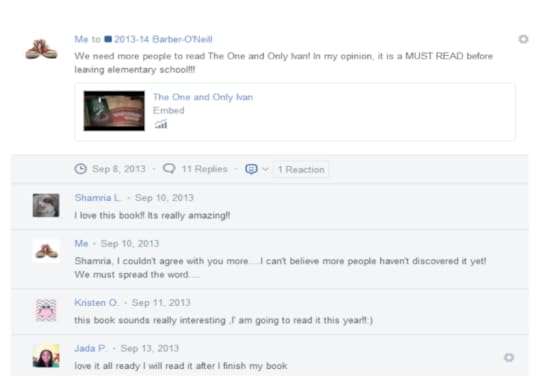 One new strategy we implemented this year is our Twitter wall. I always tell my peers that Twitter is probably my most valuable source for ongoing Professional Development, but I have also started to use it to connect our readers to published authors. I have sent pictures of students’ responses to literature and videos of book clubs to various authors and almost always hear back from the authors with very positive responses. As much as my students and I appreciate the work of our favorite authors, it is also incredible to see authors appreciate the work of our students. Our students light up after seeing that authors have taken the time to value their work and it absolutely encourages them to continue their work and extend their thinking.
One new strategy we implemented this year is our Twitter wall. I always tell my peers that Twitter is probably my most valuable source for ongoing Professional Development, but I have also started to use it to connect our readers to published authors. I have sent pictures of students’ responses to literature and videos of book clubs to various authors and almost always hear back from the authors with very positive responses. As much as my students and I appreciate the work of our favorite authors, it is also incredible to see authors appreciate the work of our students. Our students light up after seeing that authors have taken the time to value their work and it absolutely encourages them to continue their work and extend their thinking.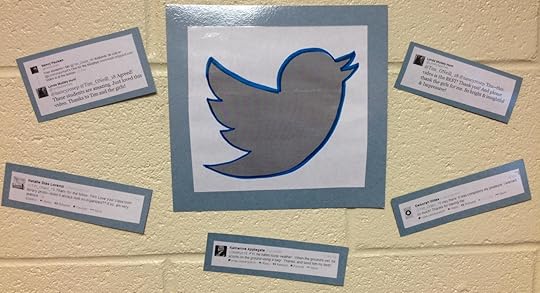
Lastly, our class has created several videos that have created excitement in regards to reading within our classroom. Our favorite books of the first nine weeks can be seen here!
Thank you, Tim, for sharing these great ideas about connecting kids with books they'll enjoy. I know I so appreciate hearing from kid readers and especially treasure artwork they create inspired by my books.
If you would like to learn more you can find Tim on Twitter or on his personal literacy blog.
 Tim O'Neill
Tim O'Neill
First of all, you should know that I have the best job in the world. I am a fifth grade Special Education teacher in my ninth year of teaching at a Title I school in the Metropolitan Atlanta area. Every day, my co-teacher and I (in the inclusion setting) have the unique opportunity to act as role models to our students, to provide them a safe and stable environment they may not always have at home, to demonstrate to them that learning can be fun, and to help them realize that education can be their ticket for improving their current situations. One of the challenges our students face as readers is the occasionally overwhelming number of children’s literature from which they have to choose. Previewing books is a skill that we continue to work on throughout the year, but one strategy we have implemented to assist with this is “Blessing Books” on each Friday. My co-teacher and I will each select two books to book talk and then post the book covers on our cabinet doors so that students may refer to this area of our room when selecting their next great independent reading book (Please note that Wonder is not posted because it was our first Extended Text/Read Aloud of the year).
 Additionally, we also post YouTube book trailers on our class Edmodo page. This creates an excitement and a buzz that often leaves a waiting list of students trying to get their hands on whatever book it might be. Reading is frequently thought of as an independent activity, but we try to give our students as many opportunities as possible to communicate about titles and authors.
Additionally, we also post YouTube book trailers on our class Edmodo page. This creates an excitement and a buzz that often leaves a waiting list of students trying to get their hands on whatever book it might be. Reading is frequently thought of as an independent activity, but we try to give our students as many opportunities as possible to communicate about titles and authors. The One and Only Ivan’s book trailer on our Edmodo page created eleven replies from students. A handful can be seen below.
 One new strategy we implemented this year is our Twitter wall. I always tell my peers that Twitter is probably my most valuable source for ongoing Professional Development, but I have also started to use it to connect our readers to published authors. I have sent pictures of students’ responses to literature and videos of book clubs to various authors and almost always hear back from the authors with very positive responses. As much as my students and I appreciate the work of our favorite authors, it is also incredible to see authors appreciate the work of our students. Our students light up after seeing that authors have taken the time to value their work and it absolutely encourages them to continue their work and extend their thinking.
One new strategy we implemented this year is our Twitter wall. I always tell my peers that Twitter is probably my most valuable source for ongoing Professional Development, but I have also started to use it to connect our readers to published authors. I have sent pictures of students’ responses to literature and videos of book clubs to various authors and almost always hear back from the authors with very positive responses. As much as my students and I appreciate the work of our favorite authors, it is also incredible to see authors appreciate the work of our students. Our students light up after seeing that authors have taken the time to value their work and it absolutely encourages them to continue their work and extend their thinking.
Lastly, our class has created several videos that have created excitement in regards to reading within our classroom. Our favorite books of the first nine weeks can be seen here!
Thank you, Tim, for sharing these great ideas about connecting kids with books they'll enjoy. I know I so appreciate hearing from kid readers and especially treasure artwork they create inspired by my books.
If you would like to learn more you can find Tim on Twitter or on his personal literacy blog.
Published on October 31, 2013 05:30
October 30, 2013
Wednesday Wisdom
"Once in a lifetime, children should be allowed to have as much sweetness as they can possibly want or hold."
Judith Olney
Published on October 30, 2013 06:30
October 29, 2013
From the Office of the Future of Reading
Alex T. Valencic is in his third year as a geeky fourth grade teacher in Urbana, Illinois. Known for his curly hair and extensive necktie collection, he shaved his head last year after the students in the school read over 1,000,000 minutes. In addition to teaching, Mr. V, as he is known to most students and parents, can be found reading from any number of his book piles scattered around his house and classroom, perusing blogs about education, politics, and religion, or relaxing at home with his wife of more than five years. They own two birds and a bunny. You can read his blog and follow him on Twitter.
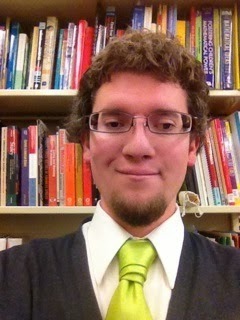 Alex Valencic
Alex Valencic
Building a Meaningful Classroom Library
I graduated from the University of Illinois in 2008 and that autumn started working as a substitute teacher in the community. In many ways, this ended up being one of the best decisions I made as a new college graduate. Over the three years I worked as a sub, I met wonderful teachers and saw amazing examples of meaningful classroom libraries.
One teacher I subbed for many times, Miriam, retired in 2010 and asked me if I would help pack up her classroom. In exchange for spending several hours hauling boxes, she gave me most of her extensive classroom library. I came home with about a dozen boxes of books! My wife, bless her heart, didn't even complain when I dragged the boxes to the basement and left them there for a year. After moving to a new house, I finally decided to unpack them all and put them out on bookshelves.
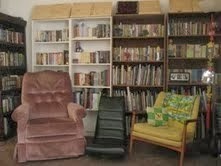
Over the next few years, I frequented garage sales and libraries to buy used books. Folks would often sell me their books at great discounts or even give them to me for free once they learned I was a teacher! My mother-in-law passed on many books as she periodically weeded her own classroom library. By the time I got hired to teach full-time, I had seven tall shelves in my living room stuffed with almost 2,000 books. Many of these selections were transferred to my new classroom, much to my wife's delight.
Nearly all of my books were well-loved second-, third, or even fourth-hand acquisitions. When I started working at my current school, I learned three amazing things: First, I have an annual classroom budget allotment that I can use to purchase materials (i.e. books) for my classroom. Second, we have two Scholastic book fairs every year and many parents in the school will buy books for their children's teachers. Third, my students know how much I love books and often bring in books they've read and donate them to our library. This has allowed me to add many new, high-interest, quality books to my library.
I decided this year to acquire brand-new books for my classroom. Using a repurposed container that my wife decorated with fancy paper and cut a hole in the top, I created a suggestion box for students. I collected their suggestions for a few weeks and then went to a nearby bookstore to take advantage of a teacher appreciation sale. My wife came with me and, after about two hours of browsing and collecting and consulting with the children's books department manager, walked out with twenty-three brand-new books (including Hattie Big Sky, incidentally) for my classroom!
So what's the real secret to building a meaningful library? Ask veteran teachers, check garage sales (especially where young people live), and, perhaps most importantly, ask your students what books they want! Good luck and happy reading!
Thank you, Alex, for sharing some creative ideas on how to build a library! I'm pretty tickled to think of Hattie Big Sky sitting on the shelf of your classroom collection. And thanks for caring so much about connecting your students with the books they will read and love.
Published on October 29, 2013 05:30
October 25, 2013
Friend Friday
I am so honored to re-introduce Susan Hill Long to you today. Due to my being a complete bumble brain, I messed up my first effort to introduce Susan to you. So please, meet this lovely woman and do read her amazing book. If you are a writer yourself, be sure to study the first chapter of Whistle in The Dark, which may be as close to perfection as I've ever read: every element of the entire story is encapsulated in that chapter.
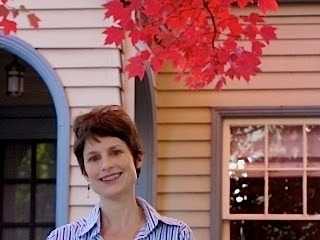 Susan Hill Long, captured at home by her daughter, MollyWhat’s It like?
Susan Hill Long, captured at home by her daughter, MollyWhat’s It like?
When I was a little girl, my family used to play a simple game called What’s it Like? Here’s how to play: one person has in mind an object in the room, and the other players guess what it is. Let’s say the object was that brown afghan, with the popcorn stitch. The game begins like so:
“What’s it like?” someone asks. It’s me.(Now comes the part that always made me feel very odd, very peculiar.) “It’s like you.” (It’s like me?) “It’s like you because it’s knobby.”
One guess, and then the question comes again from the next in line, “What’s it like?” and the round goes on, the players gathering clues until the secret object is discovered. But I’m not knobby, my young self would think. I’m not made of wool. I’m not those things at all. Am I?
On some level, the game would make me question my very knowledge of myself, which even then (especially then?) I knew to be a slippery business. I’d go and climb on the step-stool and look in the mirror and wonder: Who am I? Am I really me? I’d pinch myself—yes, real—and watch for clues.
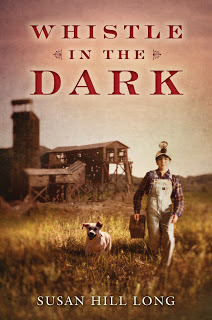
In a scene cut from Whistle in the Dark, the characters Clem and Esther play What’s It Like. Esther asks the question and gathers Clem’s replies and before long guesses correctly his miner’s cap lamp.
I don’t recall why I ended up cutting the game from the book. Probably it didn’t do the work I needed the scene to do, though it would seem to offer some potential—feel free to use it. But the question – what’s it like?—and especially the weird and challenging refrain, it’s like you…, gets at something interesting about writing. In order to write, a person probably needs to want to make a study of all kinds of things, and appreciate the curious, provoking ways in which they collide or connect. To take another look, to collect, to sort by color, by texture, by contrast, by feel and by feeling, and then to shake the gunnysack and sort it all again.
To take what is green about the object, what is blue about yourself —and to ask, what’s it like? What’s it really like? And then, be open to surprise.
Thank you, Sue, for sharing this bit of the behind-the-scenes process of book creating. Clem and Lindy will stay with me for a long, long time, and I, for one, will be re-reading this book to analyze how you so deftly wove in historical details and never once left me feeling I was being fed information. That is a real gift.
 Susan Hill Long, captured at home by her daughter, MollyWhat’s It like?
Susan Hill Long, captured at home by her daughter, MollyWhat’s It like?When I was a little girl, my family used to play a simple game called What’s it Like? Here’s how to play: one person has in mind an object in the room, and the other players guess what it is. Let’s say the object was that brown afghan, with the popcorn stitch. The game begins like so:
“What’s it like?” someone asks. It’s me.(Now comes the part that always made me feel very odd, very peculiar.) “It’s like you.” (It’s like me?) “It’s like you because it’s knobby.”
One guess, and then the question comes again from the next in line, “What’s it like?” and the round goes on, the players gathering clues until the secret object is discovered. But I’m not knobby, my young self would think. I’m not made of wool. I’m not those things at all. Am I?
On some level, the game would make me question my very knowledge of myself, which even then (especially then?) I knew to be a slippery business. I’d go and climb on the step-stool and look in the mirror and wonder: Who am I? Am I really me? I’d pinch myself—yes, real—and watch for clues.

In a scene cut from Whistle in the Dark, the characters Clem and Esther play What’s It Like. Esther asks the question and gathers Clem’s replies and before long guesses correctly his miner’s cap lamp.
I don’t recall why I ended up cutting the game from the book. Probably it didn’t do the work I needed the scene to do, though it would seem to offer some potential—feel free to use it. But the question – what’s it like?—and especially the weird and challenging refrain, it’s like you…, gets at something interesting about writing. In order to write, a person probably needs to want to make a study of all kinds of things, and appreciate the curious, provoking ways in which they collide or connect. To take another look, to collect, to sort by color, by texture, by contrast, by feel and by feeling, and then to shake the gunnysack and sort it all again.
To take what is green about the object, what is blue about yourself —and to ask, what’s it like? What’s it really like? And then, be open to surprise.
Thank you, Sue, for sharing this bit of the behind-the-scenes process of book creating. Clem and Lindy will stay with me for a long, long time, and I, for one, will be re-reading this book to analyze how you so deftly wove in historical details and never once left me feeling I was being fed information. That is a real gift.
Published on October 25, 2013 05:30
October 24, 2013
From the Office of the Future of Reading
Please help me welcome our guest blogger for today, Kim Campbell. Kim spends her days with fifth graders in Colorado, in her seventh year of teaching. She's a fan of educators modeling reading and writing lives for their students. To that end, she has joined no fewer than three book clubs this year, which she loves…even though she longer sleeps.
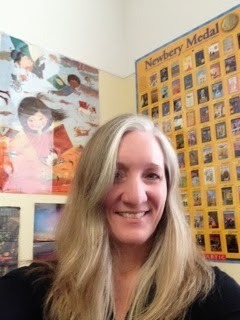 Kim Campbell
Kim Campbell
Last week, a former student surprised me with a bag of books from home to donate to my collection. Among the treasures was a copy of The Best Christmas Pageant Ever, a favorite read aloud of one of my colleagues, which I gave to him.
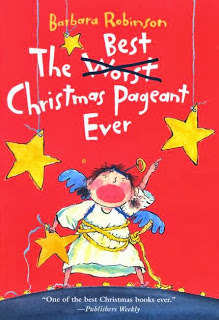
He doesn’t know it yet, but I’m going to suggest that he raffle off that extra copy to his students. I’ve witnessed the excitement that raffles can produce this year as I’ve used them to help decide who will be the first to read new classroom books such as Jeffrey Brown’s Star Wars: Jedi Academy and Neil Gaiman’s Fortunately the Milk. It’s an idea that a teacher I met at NerdCampMI shared with me in July.
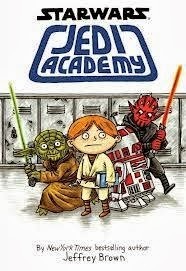

So much of teaching is about paying it forward, especially when it comes to books and reading. I will always appreciate Donalyn Miller, a pay-it-forward pro, for her 2009 book The Book Whisperer: Awakening the Inner Reader in Every Child.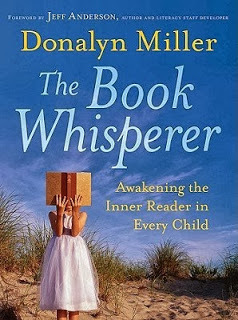
I love that it is still finding new readers. At a recent staff meeting, our librarian had a copy and asked if I had read it. She was eager to dive in. Another colleague couldn’t locate her copy last month and borrowed mine. I plan to do more sharing of that book, and Donalyn’s follow-up, Reading in the Wild: The Book Whisperer’s Keys to Cultivating Lifelong Reading Habits, when it is published in November.

Paying it forward often helps us to see possibilities. I am one of maybe a handful of teachers at my school who is on Twitter. I’ve been talking about it so much since I started using it in June that my principal is now saying she should get an account. For me, it is an invaluable resource. Of course the lesson plans, technology tips, and book recommendations are all great. But it’s also the “can-do” attitude generated by the teachers and librarians online (in their blogs, too) that helps you feel as though you can make things happen, and not just in your own classroom.
When I asked if we could have our first ever author visit this year, for example, I felt propelled forward by the experiences and enthusiasm of those I have connected with online. As it turns out, we will be hosting Lynda Mullaly Hunt in February when she’s in town for CCIRA, a state literacy conference. I can’t wait for the students to get their hands on Lynda’s thoughtful book, One for the Murphys, and to have her inspire them as writers.
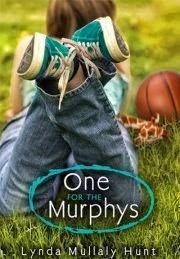
Our efforts to connect students with books have to include supporting each other with the resources to do so. I’ve decided to create a list that includes the ways I want to help my school with this important work. Next up for me is persuading my building leaders to add book talks to our staff meetings. What’s next on your list?
What's next on my list, Kim, is reading Donalyn's new book! I'm also going to follow you on Twitter so I can learn more ways to model good reading and writing behavior for the young kids in my life.
 Kim Campbell
Kim Campbell
Last week, a former student surprised me with a bag of books from home to donate to my collection. Among the treasures was a copy of The Best Christmas Pageant Ever, a favorite read aloud of one of my colleagues, which I gave to him.

He doesn’t know it yet, but I’m going to suggest that he raffle off that extra copy to his students. I’ve witnessed the excitement that raffles can produce this year as I’ve used them to help decide who will be the first to read new classroom books such as Jeffrey Brown’s Star Wars: Jedi Academy and Neil Gaiman’s Fortunately the Milk. It’s an idea that a teacher I met at NerdCampMI shared with me in July.


So much of teaching is about paying it forward, especially when it comes to books and reading. I will always appreciate Donalyn Miller, a pay-it-forward pro, for her 2009 book The Book Whisperer: Awakening the Inner Reader in Every Child.

I love that it is still finding new readers. At a recent staff meeting, our librarian had a copy and asked if I had read it. She was eager to dive in. Another colleague couldn’t locate her copy last month and borrowed mine. I plan to do more sharing of that book, and Donalyn’s follow-up, Reading in the Wild: The Book Whisperer’s Keys to Cultivating Lifelong Reading Habits, when it is published in November.

Paying it forward often helps us to see possibilities. I am one of maybe a handful of teachers at my school who is on Twitter. I’ve been talking about it so much since I started using it in June that my principal is now saying she should get an account. For me, it is an invaluable resource. Of course the lesson plans, technology tips, and book recommendations are all great. But it’s also the “can-do” attitude generated by the teachers and librarians online (in their blogs, too) that helps you feel as though you can make things happen, and not just in your own classroom.
When I asked if we could have our first ever author visit this year, for example, I felt propelled forward by the experiences and enthusiasm of those I have connected with online. As it turns out, we will be hosting Lynda Mullaly Hunt in February when she’s in town for CCIRA, a state literacy conference. I can’t wait for the students to get their hands on Lynda’s thoughtful book, One for the Murphys, and to have her inspire them as writers.

Our efforts to connect students with books have to include supporting each other with the resources to do so. I’ve decided to create a list that includes the ways I want to help my school with this important work. Next up for me is persuading my building leaders to add book talks to our staff meetings. What’s next on your list?
What's next on my list, Kim, is reading Donalyn's new book! I'm also going to follow you on Twitter so I can learn more ways to model good reading and writing behavior for the young kids in my life.
Published on October 24, 2013 05:30
October 23, 2013
Wednesday Wisdom
Published on October 23, 2013 06:30
October 22, 2013
From the Office of the Future of reading
Please welcome Michelle L. N. Gray as today's guest blogger. Michelle has been a Children’s Librarian at the Canton Public Library in Michigan for a little over 6 years. She loves reading children’s and teen books, photography, writing, and spending time with family and friends. One day, she will get to pet a penguin in the wild, or have one of her very own, or most likely just get to pet one at the zoo.
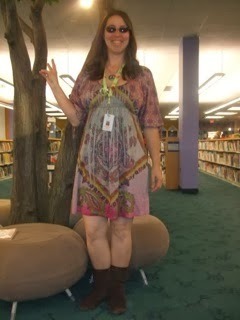 Michelle L.N. Gray
Michelle L.N. GrayMy Penguin Party of Awesome!In my day job, I am a Children’s Librarian in Canton, Michigan. I love my job and one of the things that makes it truly amazing is when I get the chance to not only plan and execute fun programs related to books and reading, but sometimes I even get to give books away. It can feel like Christmas in the middle of May. My library was the recipient of a grant from the Target Corporation sometime back and it enabled us to do one program a month for eight months and give away one book per family for up to 50 families at each program. My topic was penguins, which I love, and the book I gave away was The Penguin and the Pea by Janet Perlman. The kids who come to these programs are between the ages of four and nine years old, so the program has to be fun and entertaining.
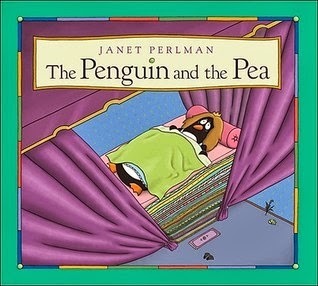 The Penguin and the Pea by Janet Perlman
The Penguin and the Pea by Janet Perlman Now I love reading to kids and I love doing crafts, but to give away a book too—well, there were smiles all around! The highlight of my night was giving a book to each family and watching them sit and read it during activity time. They curled up on the floor and gently turned the pages of their new treasure while eating Goldfish crackers (because that’s what penguins eat—fish) and sipping juice.When I do these programs, I love to plan some games and crafts. One of the crafts was directly related to the book as the kids were able to glue construction paper together, place a pea in the mountain of mattresses, and finally, glue a penguin I copied from the story to the top of the pile. This way, they could use this to help retell the story to their family and friends. Or they could hang it on the fridge. I am totally happy with both outcomes. My second craft was having them make dyed macaroni necklaces, in honor of the Macaroni penguin, of course. I also liked to work with some non-fiction, so that the kids not only heard a fun story, had a great snack, and made a craft, but hopefully learned something about penguins too. To help pique their interest, we did a penguin guessing game using pictures, facts, and lots of hints. I love PowerPoint for this reason especially because we can project it on the wall and have great fun laughing and guessing each penguin based on the clues I projected on the wall.My goal for these programs is for kids to have fun and realize that a book can go beyond what is just in those 32 pages of words and illustrations. Have fun with your own Party of Awesome!
Thank you Michelle for sharing those fun ideas on how to take a book past the pages and make it more interactive!
Want to follow Michelle's lead and apply for a Target grant? Click here!
Published on October 22, 2013 05:30
October 18, 2013
Friend Friday
I'm delighted to introduce you to Jane Kelley, whose brand new book came out October 15. I was quite taken with her story, in which we are given an African parrot's eye view of the world. It was also remarkable to me the way in which she intertwined the story of that very self-centered parrot and a girl whose illness has diminished her sense of self. Despite the title, this is a story of redemption and love, rather than desperation. Do read it!
 Jane Kelley
Jane Kelley
FROM Z to ZENO
I’m not very good at coming up with names. Just ask my daughter––who came within one chromosome of being called “Absalom.” Whenever I begin a novel, the characters are identified by an initial. In The Desperate Adventures of Zeno and Alya, the girl was A and the parrot was Z.
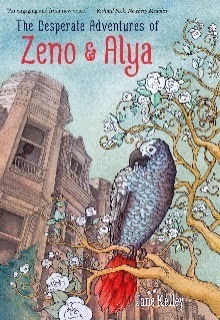
This was okay for the first few drafts, but eventually I had to commit to an actual name. I liked the sound of Zeno. The parrot was a curmudgeon, so it seemed fitting that he had the syllable “no” in his name. When I made that nearly random choice, I had no idea how it would shape the character and eventually express an important theme of the novel.
Those choices happened because I kept myself open to possibilities. Being open is nerve wracking. It’s much faster to drive the plot along an interstate, listening to the reassuring voice of the GPS say, “Turn left, turn right.” Whenever you don’t follow that plan, the GPS says with great disdain, “Recalculating,” and puts you back on track.
But the best discoveries can happen when you ignore the GPS. Notice that I said “can.” They don’t always. Some unplanned turns lead to dead ends.
After Z became Zeno, I had to figure out who would name a parrot after a Greek philosopher. Probably a professor of Greek Literature. That professor would probably quote the philosopher Zeno. Since parrots imitate what they hear, I thought it would be fun to have my Zeno repeat those quotes. But the philosopher Zeno’s claim to fame was identifying a paradox of infinity. If you always travel half the distance to your goal, you will never arrive. What a depressing idea! This was a dead end. Did I give up? No, I poked around some more and discovered a second philosopher named Zeno. He was one of the original Stoics. He said, “Two ears, one mouth,” which means people should listen more than they speak. (My parrot Zeno thought that advice meant that people should be quiet and listen to him.)
It wasn’t until the penultimate draft that I discovered the quote that sums up one of the most important themes of the book. Zeno the Stoic defined friend as: “Another I.” Zeno the parrot thinks this quote means that his friends should be exactly like him. But after many desperate adventures, he understands the actual meaning. A friend is someone you cherish as you would yourself. Another I.
When you write, you won’t always know what you’re looking for. You won’t even know that you should be looking for what you’re looking for. But if you’re open to possibilities, if you pay attention to everything around you, if you ignore the voice who thinks it knows where you should be going––you’ll be more likely to make the discovery that makes it all worthwhile.
Jane, thank you for this reminder to trust the creative spirit to pluck the just-right story fibers from the loom of life!
 Jane Kelley
Jane Kelley
FROM Z to ZENO
I’m not very good at coming up with names. Just ask my daughter––who came within one chromosome of being called “Absalom.” Whenever I begin a novel, the characters are identified by an initial. In The Desperate Adventures of Zeno and Alya, the girl was A and the parrot was Z.

This was okay for the first few drafts, but eventually I had to commit to an actual name. I liked the sound of Zeno. The parrot was a curmudgeon, so it seemed fitting that he had the syllable “no” in his name. When I made that nearly random choice, I had no idea how it would shape the character and eventually express an important theme of the novel.
Those choices happened because I kept myself open to possibilities. Being open is nerve wracking. It’s much faster to drive the plot along an interstate, listening to the reassuring voice of the GPS say, “Turn left, turn right.” Whenever you don’t follow that plan, the GPS says with great disdain, “Recalculating,” and puts you back on track.
But the best discoveries can happen when you ignore the GPS. Notice that I said “can.” They don’t always. Some unplanned turns lead to dead ends.
After Z became Zeno, I had to figure out who would name a parrot after a Greek philosopher. Probably a professor of Greek Literature. That professor would probably quote the philosopher Zeno. Since parrots imitate what they hear, I thought it would be fun to have my Zeno repeat those quotes. But the philosopher Zeno’s claim to fame was identifying a paradox of infinity. If you always travel half the distance to your goal, you will never arrive. What a depressing idea! This was a dead end. Did I give up? No, I poked around some more and discovered a second philosopher named Zeno. He was one of the original Stoics. He said, “Two ears, one mouth,” which means people should listen more than they speak. (My parrot Zeno thought that advice meant that people should be quiet and listen to him.)
It wasn’t until the penultimate draft that I discovered the quote that sums up one of the most important themes of the book. Zeno the Stoic defined friend as: “Another I.” Zeno the parrot thinks this quote means that his friends should be exactly like him. But after many desperate adventures, he understands the actual meaning. A friend is someone you cherish as you would yourself. Another I.
When you write, you won’t always know what you’re looking for. You won’t even know that you should be looking for what you’re looking for. But if you’re open to possibilities, if you pay attention to everything around you, if you ignore the voice who thinks it knows where you should be going––you’ll be more likely to make the discovery that makes it all worthwhile.
Jane, thank you for this reminder to trust the creative spirit to pluck the just-right story fibers from the loom of life!
Published on October 18, 2013 05:30




